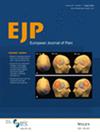Nefopam Misuse: A Cross-Sectional Study in France
Abstract
Background
Nefopam is a non-opioid analgesic. Nefopam is increasingly prescribed in contraindicated populations, raising questions about the appropriate use of nefopam. This study aimed to evaluate nefopam use in France according to age, epilepsy status and socioeconomic status.
Methods
This retrospective observational study was conducted from January 1, 2016, to December 31, 2022. Data on nefopam use in France were retrieved from the national health insurance information system.
Results
Between 2016 and 2022, 51.8 million boxes of nefopam were dispensed to 6.5 million patients, with a mean age of 56 years and a male-to-female sex ratio of 0.6. Nefopam use increased by 121.7%, whereas codeine use and tramadol use decreased by 7% and 17% respectively, raising the market share of nefopam from 5.0% to 11.6%. Nefopam use increased 2.8-fold in patients under 15 years and 1.7-fold in patients over 65 years, after standardisation. Nefopam use increased 1.7-fold in patients with epilepsy and 1.2-fold in patients with a disadvantaged socioeconomic status. The cost of nefopam was 4.3 times higher than alternative drugs. During the period 2016–2022, 8.23% of the general population received 1 to 4 boxes of nefopam per year, 4.68% received 6 to 19 boxes per year, and 0.91% received ≥ 20 boxes per year.
Conclusions
This study highlights a widespread inappropriate use of nefopam, especially in contraindicated populations and vulnerable groups. The recent availability of the oral form in France may worsen these patterns. Close national and European monitoring is important to assess the extent of such practices and guide future regulation.
Significance Statement
This work is a snapshot of nefopam usage in France. It sheds light on contraindicated uses (in subjects under 15 years of age or with epilepsy), not recommended uses (chronic usage, or in the elderly) and reports the usage of this treatment in the most deprived patients. This article cautions against underestimating the dangers and pitfalls of this treatment, especially in light of mounting evidence of pharmacodependence.


 求助内容:
求助内容: 应助结果提醒方式:
应助结果提醒方式:


